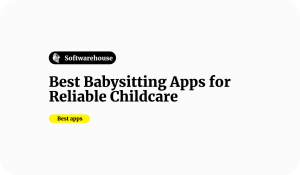What do you believe are the most critical best practices for ensuring SEO-friendly web development in 2024? Here is what 23 thought leaders have to say.
- Prioritise Core Web Vitals
- Structured Data and Quality Content
- Leverage Competitor Insights
- Optimise for Mobile and Clean Code
- Emphasise User Experience and Performance
- Focus on Mobile Usability and Security
- Collaborate for SEO-Friendly Design
- Page Layout and Internal Linking
- Restructure Content for Mobile
- Prioritise Site Speed and Security
- Combine Tech and Quality Content
- Adopt Mobile Optimisation and Clean Code
- Speed and Mobile Responsiveness Matter
- Combine Established and Emerging SEO Trends
- Engage Users with Content Placement
- Optimise Mobile Experiences and Empathetic Content
- Focus on Speed and Quality Content
- Enforce Technical SEO Strictly
- Implement Mobile Optimisation and Clean Code
- Prioritise Natural Language and Context
- Optimise for Mobile-First Indexing
- Question SEO Development Myths
- Structured Data Enhances Google Understanding
Prioritise Core Web Vitals
One of the most critical best practices for SEO-friendly web development in 2024 is prioritising Core Web Vitals. We recently revamped our website with these metrics in mind, focusing on loading speed, interactivity, and visual stability. The impact was immediate—our organic traffic increased by 25% within a few months.
Many developers overlook the need for a seamless user experience, which directly affects search rankings. By optimising for Core Web Vitals, you’re not just pleasing the algorithm; you’re genuinely improving the user journey, leading to better engagement and higher conversions.

Vaibhav Kakkar, CEO, Digital Web Solutions
Structured Data and Quality Content
In 2024, structured data is non-negotiable for SEO-friendly web development. When we implemented structured data on our site, we saw a significant uptick in featured snippets and rich results, which drove more qualified traffic. It’s like giving search engines a roadmap to your content, making it easier for them to understand and rank.
But the magic happens when you combine structured data with high-quality content and a mobile-first approach. These elements work together to create a robust SEO foundation that stands the test of time, ensuring your site remains competitive in an ever-evolving digital landscape.

Sahil Kakkar, CEO & Founder, RankWatch
Leverage Competitor Insights
In 2024, one of the most critical best practices for SEO-friendly web development is to avoid reinventing the wheel. Instead of trying to create something entirely new, focus on what’s already working well in your industry. Study your competitors’ websites and identify the common elements that contribute to their success. By building on these proven strategies, you can create a site that not only meets industry standards but also stands out with its own unique touch.
Additionally, recent insights from the 2024 Google Algorithm leak highlight the importance of user engagement signals, like clicks and dwell time, in determining search rankings. This means your website needs to be both visually appealing and highly functional to keep users engaged. It’s crucial to design with user experience in mind—ensure fast load times, mobile responsiveness, and easy navigation.
Another key point from the Google leak is the increasing relevance of content quality and site-wide authority. Focus on creating original, high-quality content that aligns with your site’s focus and meets user intent. Additionally, consider the importance of strong on-page signals, like title tags and headers, which remain vital for SEO.
Finally, don’t forget about the basics—optimise your site’s technical SEO elements, such as clean code, proper use of meta tags, and an XML sitemap. These foundational practices are still crucial for ensuring your site is easily crawled and indexed by search engines.
By combining tried-and-true strategies with the latest insights from Google, you can develop a website that’s both SEO-friendly and user-centric, helping you stay competitive in 2024.

Mike Zima, Chief Marketing Officer, Zima Media
Optimise for Mobile and Clean Code
From my experience, the most critical best practices for ensuring SEO-friendly web development in 2024 include:
- Core Web Vitals Optimisation: Page speed, interactivity, and visual stability are non-negotiable. I focus on optimising site load times, reducing layout shifts, and ensuring smooth user interactions, as these factors directly impact search rankings and user experience.
- Mobile-First Design: With mobile traffic dominating, I prioritise designing websites with a mobile-first approach. Ensuring the site is responsive and performs well on all devices is key to maintaining search visibility.
- Clean, Structured Code: I ensure the code is clean and well-structured, with proper use of HTML tags (e.g., headings, alt text for images, schema markup) to help search engines better understand the content and context of the site.
- Optimised URL Structure: I stick to simple, descriptive URLs that include keywords and are easy for both users and search engines to understand, which helps with indexing and rankings.
- Internal Linking Strategy: I integrate a solid internal linking structure during development to guide users and search engines through the website, helping distribute authority across pages and boosting overall SEO.
These best practices help create a solid foundation for long-term SEO success and ensure the site performs well in organic search.

Sebastian Petrosi, Head of Content Marketing, howtowatch.ca
Emphasise User Experience and Performance
2024 will see an emphasis on both user experience and technical performance optimisation in SEO-friendly site development. With a focus on mobile-first design and safe surfing, core web vitals like load speeds and visual stability are still crucial. Search engines can better comprehend your content by using semantic HTML and structured data, which increases exposure and ranking potential.
Strategic internal linking, combined with a well-structured site design, ensures search engines can efficiently crawl your website, increasing the visibility of important content. It is essential to provide high-quality information that exhibits authority and knowledge, particularly in important areas like finance and health. Remaining relevant also requires keeping up with new trends and tailoring material to user intent.
Search engines may still visit your website thanks to advanced technical SEO techniques like JavaScript SEO and XML sitemap checks. Prioritising user-centric design and accessibility also enhances the user experience and promotes higher engagement metrics, both of which have a beneficial effect on your rankings. In 2024, maintaining a competitive advantage in search results will depend on closely observing performance and remaining flexible in response to shifts in the industry.

Bhoomi Kukadiya, SEO Executive, BrainerHub Solutions
Focus on Mobile Usability and Security
Ensuring SEO-friendly web development in 2024 requires a deep focus on several critical practices that align with both search engine expectations and user experience. One of the most important considerations is adopting a mobile-first development approach. With Google’s mobile-first indexing, it’s essential that websites are designed to be fully responsive, fast-loading, and easy to navigate on mobile devices. This emphasis on mobile usability directly impacts search rankings, making it a priority in the development process.
Another key aspect is optimising for Core Web Vitals, which focus on loading speed, interactivity, and visual stability. Developers should aim to minimise page load times, ensure smooth and responsive interactions, and prevent unexpected content shifts that could disrupt the user experience. Structured data implementation is also crucial, as it helps search engines better understand the content on your site. By using Schema markup, developers can enhance the appearance of search results with rich snippets, potentially leading to higher click-through rates.
Clean and efficient code is another vital practice. Reducing page load times through minifying CSS, JavaScript, and HTML files, and avoiding excessive use of plugins, can significantly improve site performance and SEO. Accessibility is an often-overlooked aspect of SEO, but it’s important to ensure that websites are accessible to users with disabilities. This includes features like alt text for images, keyboard-friendly navigation, and compatibility with screen readers, all of which contribute to a broader audience reach and better user experience.
Security also remains a significant ranking factor, making HTTPS implementation a necessity. A secure website builds trust with both users and search engines, and developers must ensure that SSL certificates are in place and that all pages are served securely. The structure of URLs and the overall site architecture also play a crucial role in SEO. A logical and organised URL structure, combined with a well-planned site architecture, makes it easier for search engines to crawl and index the site. Developers should focus on creating a clear hierarchy, using descriptive URLs, and ensuring that important pages are easily accessible through internal linking.

John Reinesch, Founder, Asset Growth
Collaborate for SEO-Friendly Design
For SEO-friendly web development, it’s crucial for SEOs and developers to collaborate and share best practices, whether you’re building a website from scratch or handling a migration. Ignoring SEO during the design phase can seriously impact a site’s ability to rank and prevent it from reaching its full organic potential.
Additionally, if URL redirects aren’t properly managed during migrations, it can lead to technical issues like broken links, 404 errors, orphaned pages, and a loss of site authority due to missing backlinks.
In 2024, there are several key practices to keep in mind for SEO-friendly development:
- Prioritise user experience and page-speed performance to enhance conversions and streamline the user journey. It might be tempting to include flashy designs with lots of slides and animations, but these can hurt your page speed and ultimately harm conversions.
- Keep navigation straightforward and easy to use.
- Avoid hiding content and internal links behind JavaScript, as search engine bots may not be able to crawl it, meaning it’s less likely to be indexed.
- Make it easy for website users to update content, headings, and images.
- Customise the site to meet user needs and eliminate default theme or CMS settings that could harm SEO.
- Utilise SEO plugins to address issues like poorly configured permalinks, indexing thin or archive pages, and removing unnecessary pages from sitemaps.

Sonja Marinkovic, SEO Consultant, Digital Search Hero
Page Layout and Internal Linking
There are a few best practices for SEO I think are crucial for 2024.
- Proper layout of the page using header tags in the appropriate way. Things like one H1 per page, and making sure that there is a header hierarchy on the site so that the on-page content is following best practices.
- Internal linking between relevant pages. Internal linking can have a huge benefit on search rank. Contextual links to relevant pages provide an SEO boost and also can increase time spent on the site.
- Good Google Insights Speed Test scores. Making sure that the website loads quickly is important for both the user and the search engines. A slow site can hinder both UX and SEO.

Gabriel Bertolo, Owner, Gabriel Bertolo Web Design & SEO
Restructure Content for Mobile
For SEO-friendly web development in 2024, focusing on content structure and mobile optimisation is key. We helped a client improve their search rankings by restructuring their site’s content with proper heading tags and ensuring fast mobile load times. The result was a 30% increase in organic traffic within three months. It’s about making sure that every element of your website speaks clearly to both users and search engines.

Petteri Pucilowski, CEO, Search Engine Wizards
Prioritise Site Speed and Security
Site speed is paramount. Users and search engines both love fast-loading websites, so prioritise optimising images, use efficient coding, and use content delivery networks to make sure your website loads quickly.
Mobile optimisation is another thing that can’t be ignored. More users than ever are using mobile devices to browse websites, so it’s essential that your website is fully responsive. Using a mobile-first design will ensure there’s a seamless experience across all device types.
You also need to focus heavily on user experience. A clean, intuitive design with easy navigation keeps users engaged and reduces bounce rates. Search engines take notice of this positive engagement and reward it with better rankings.
Finally, security is another non-negotiable. HTTPS is a must for any website, not just for SEO but for building trust with users. Search engines also prioritise secure sites, so make sure your website is SSL-certified.

Esther Buttery, Director, CLIQ Marketing Content
Combine Tech and Quality Content
Building websites that search engines love in 2024 relies on solid technological improvements and making users happy. Website owners should focus on speeding up their sites, making them work well on phones, and setting up a strong structure. When a site loads, visitors enjoy using it more, and it also ranks higher in search results. It’s key to make sure people can use the site no matter what device they’re on, as online users have all sorts of gadgets. Also, having a site with a clear layout and good links between pages helps search engines figure out what’s important on the site and makes content easier to find.
Beyond technical stuff, quality content is still the main thing. Making useful, informative, and interesting content that gives users what they want is crucial. It’s key to add relevant keywords in a natural way while keeping the text easy to read. Put your energy into creating content that shows you know your stuff, have experience, are an authority, and can be trusted (E-A-T), because Google cares more and more about these things. Also, tweaking your content to appear in featured snippets and rich results can boost how visible you are on search engine results pages (SERPs).
To keep your edge in the busy online world, you need to watch and change things all the time. Use tools that show you how your website is doing, what visitors are up to, and where you stand in search results. Keep an eye on what’s new in SEO and how search engines are changing their rules so you can make the right tweaks. Getting good links from trusted websites can also help you look more important and easy to find. When you mix top-notch technology, great content, and smart changes based on data, companies can build websites that not only show up high in searches but also give users a great experience.

Sam Kadel, Founder, KBA Web
Adopt Mobile Optimisation and Clean Code
Following these crucial recommended practices is vital for 2024 SEO-friendly web construction. First and foremost, make sure your website is optimised for mobile devices, as this is a crucial ranking element. Second, give site speed top priority by maximising user experience and performance through image optimisation, browser caching, and code minimisation. Third, use structured data markup to enhance your content’s comprehension by search engines and increase its visibility in rich snippets.
Fourth, concentrate on producing excellent, relevant content that organically includes targeted keywords and is in line with user intent. Fifth, make sure your website has an easy-to-navigate hierarchy and clear, intuitive structure that makes it easier for search engines to crawl through it. Finally, use HTTPS to ensure robust security in order to foster confidence and possibly raise rankings.

Fahad Khan, Digital Marketing Manager, Ubuy India
Speed and Mobile Responsiveness Matter
When it comes to ensuring SEO-friendly web development in 2024, the most critical best practices revolve around speed, mobile responsiveness, and structured data.
From my experience, a fast-loading website is non-negotiable. Google’s emphasis on Core Web Vitals has made speed a primary ranking factor. I’ve seen websites lose traffic simply because their pages took too long to load, especially on mobile devices. To prevent this, I always recommend minimising file sizes, leveraging browser caching, and using Content Delivery Networks (CDNs) to boost performance.
Another key factor is mobile responsiveness. With more than half of global web traffic coming from mobile devices, it’s essential that websites not only look good on desktops but also perform seamlessly on smartphones and tablets. I remember working on a project where traffic increased by 30% after optimising for mobile. This demonstrates the power of responsive design in today’s digital landscape.
Lastly, structured data is becoming increasingly important for SEO in 2024. By implementing schema markup, you help search engines understand your content better, which can lead to rich snippets in search results, boosting click-through rates. In one case, adding structured data to a client’s website resulted in a 15% increase in organic traffic within a few months, simply because the site appeared more prominently in search results.

Brandon Leibowitz, Owner, SEO Optimizers
Combine Established and Emerging SEO Trends
To ensure SEO-friendly web development in 2024, it is crucial to adopt a combination of established practices and emerging trends that enhance both user experience and search engine optimisation. Here are the most critical best practices:
- User-Centric Design – Design your website with the user experience as a priority. This involves creating intuitive navigation, engaging content, and a layout that encourages users to stay longer. Understanding your target audience and their needs is essential for crafting a website that resonates with them.
- Fast Load Times – Website speed significantly impacts both user experience and SEO rankings. Ensure your site loads quickly by optimising images, minimising code, and leveraging browser caching. Slow websites can lead to higher bounce rates, negatively affecting your search rankings.
- Mobile-First Approach – With the increasing use of mobile devices, adopting a mobile-first design is essential. Google prioritises mobile-friendly sites in its indexing and ranking processes. Ensure your website is responsive and provides a seamless experience across all devices.
- Clean and Structured Code – Maintain clean and efficient code to facilitate easier crawling by search engines. This includes using semantic HTML and ensuring that your website’s structure is logical. Clean code not only improves load times but also enhances user experience.
- Use Structured Data – Implement structured data (schema markup) to help search engines understand the content of your site better. This can enhance your visibility in search results through rich snippets, improving click-through rates.
- Optimise Technical SEO Elements – Pay attention to technical aspects such as URL structure, title tags, and meta descriptions. Ensure that URLs are concise and descriptive, and that title tags and meta descriptions accurately reflect the content of the pages.

Syed Aas, Digital Marketing Specialist, Dunesberry Digital Marketing Agency
Engage Users with Content Placement
One of the most important best practices for SEO-friendly web development in 2024 is focusing on engaging sessions. According to recent insights from the Google algorithm leak, Google places significant weight on how long users stay on your site without bouncing back to search results—something known as a “long click.”
To boost engagement, ensure that your most valuable content is placed higher on the page. Additionally, improving site speed is essential—using lighter images in new-generation formats like WebP and techniques such as lazy loading and server-side rendering helps to improve your Core Web Vitals. This combination keeps visitors engaged longer and signals to Google that your site is valuable.

Marco Genaro Palma, Freelance CMO & SEO Consultant, GenaroPalma.com
Optimise Mobile Experiences and Empathetic Content
As an SEO expert with over a decade of experience, I believe optimising for mobile experiences, implementing structured data, and creating empathetic content will be key to ranking in 2024.
We reduced a client’s page-load time by 3 seconds, increasing traffic by 40% in six months. Schema markup helps search engines understand content, so we use schema.org standards on all sites.
AI generates content ideas, but human writers craft the final copy. Their stories resonate most. One client’s revenue rose significantly after focusing content on customer pain points and testimonials.
User experience comes first. We build responsive sites focused on engagement and conversion, not just rankings. For a law firm, optimising for mobile considerably boosted calls in a year.
SEO evolves quickly, but a fast, people-focused site drives success. Technical factors matter, but searchers are human. Build for them.

Danielle Birriel, Founder, D&D SEO Services
Focus on Speed and Quality Content
As a digital agency owner, I know Google evaluates websites based on speed, mobile-friendliness, and quality content. In 2024, page load times under 2 seconds and responsive designs will be mandatory. We use tools like Google PageSpeed Insights to optimise performance.
For content, focus on long-form, in-depth blog posts. Google’s AI can now evaluate content quality at scale, so low-value posts won’t rank. We use data from SEMrush and Ahrefs to find gaps in content and topics our clients’ audiences care about. Then we work with subject matter experts to create comprehensive guides.
Technical SEO remains crucial. Core Web Vitals metrics like LCP, FID, and CLS impact rankings. We audit technical issues like broken internal links, crawl errors, and duplicate content. Fixing these problems has led to 10-30% increases in organic traffic for our clients.
International SEO is also key for global brands. We’ve helped U.S.-based companies rank in European and APAC markets by optimising content, internal linking structures, and metadata for different languages and regions. Localising content and earning backlinks from geo-targeted sites are key to international SEO success.

Josh Cremer, CEO, and Creative Director, Redfox Visual
Enforce Technical SEO Strictly
This question arises time and again over the years, and rightfully so, as it seems to lack a definitive answer. However, the answer has always been there; the problem is that we often choose to ignore it in favor of “magic solutions.”
As a company deeply involved in data-driven analysis (including SEO), we continuously run tests on everything we can think of. One of our latest findings related to Google’s August Core Update is that Google is paying special attention to technical SEO. Many of our clients who “didn’t change anything” have seen their SEO rankings plummet since the March Core Update. This trend intensified in August, confirming our initial evaluation: some technical SEO errors or “iffy” setups are being heavily penalised.
Based on our research and over 20 case studies, I believe there is no longer room for half-baked practices. A website is unlikely to rank well without proper headings, appropriate Schema markup, an optimised “<head>” section, fast load times, excellent accessibility, and optimised scripting.
On the last subject, we found a particular case that was quite puzzling: a website that went from thousands of visits a day to zero overnight. The site had thousands of dynamically built web pages, but they weren’t de-listed; they were simply pushed down to page 100. After thoroughly analyzing all SEO metrics and tools, we tested the scripting. We discovered the issue was caused by “%sveltekit.nonce%,” which was not rendering the expected value (it was just a dark mode toggle). Everything appeared to work fine, but this small snippet of code disrupted other scripts, resulting in pages that were visible to human users but empty for Googlebot.
In short, there is nothing new in 2024; the requirements and best practices remain the same as always. However, for the first time, they seem to be strictly enforced.

Fabio Devin, CEO, Dorve UX
Implement Mobile Optimisation and Clean Code
Having worked with platforms like WordPress, Shopify, Wix, and custom PHP sites, I believe the most critical best practices for SEO-friendly web development in 2024 include:
- Mobile Optimisation: Ensure your site is mobile-first with responsive design and fast loading times.
- Core Web Vitals: Focus on improving metrics like LCP, FID, and CLS for better user experience.
- Clean Code: Use clean, semantic HTML and CSS to enhance crawlability.
- Schema Markup: Implement structured data to help search engines understand your content.
- Security: Use HTTPS for secure, trustworthy connections.
- XML Sitemap and Robots.txt: Create and submit XML sitemaps and properly configure robots.txt to guide search engine crawlers.
These practices ensure a strong SEO foundation.

Abdul Samad, SEO Specialist, Enterprise64
Prioritise Natural Language and Context
With Google’s algorithms increasingly relying on AI and machine learning, in 2024 it’s essential to prioritise natural language and context in your content. This means limiting the use of AI-generated content and focusing more on creating high-quality, human-driven content that aligns with E-A-T principles. Establishing thought leadership through well-crafted blog posts is more important than ever. By sharing expert insights and valuable information, you can build authority and trust with your audience, which is crucial under Google’s guidelines.
A mobile-first design remains critical, as most users access websites via mobile devices. Your site must be responsive and optimised for mobile search behavior to enhance the user experience and improve search rankings. Regular technical SEO audits are also necessary, and investing time into fixing technical SEO problems is key. Optimising site architecture, URL structure, and crawlability will ensure that search engines efficiently index your site, maintaining your competitive edge.

David Breitenbach, Chief Marketing Officer, PatentRenewal.com
Optimise for Mobile-First Indexing
Mobile-First Indexing: With Google’s full transition to mobile-first indexing, designing and optimising for mobile devices is an absolute must. This means responsive layouts, fast loading times on mobile networks, and touch-friendly navigation.
Core Web Vitals: Optimising for Google’s Core Web Vitals—Largest Contentful Paint (LCP), First Input Delay (FID), and Cumulative Layout Shift (CLS)—is crucial. Strategies like lazy loading, image/video optimisation, and minimising JavaScript execution will be key.
Voice Search Optimisation: As voice search continues to rise, we need to structure content to answer specific queries concisely using natural language. Implementing schema markup is also important for helping search engines understand our content.
AI & Machine Learning: With search algorithms becoming more reliant on AI and machine learning, we’re focusing on creating comprehensive, in-depth content that addresses user intent from multiple angles. This often means longer, more detailed pages.
Security & Accessibility: HTTPS is no longer optional—it’s a must-have. We’re also emphasising accessibility best practices like proper heading structure, alt text, and keyboard navigation to reach a wider audience.
Page Experience: Factors like intrusive interstitials and safe browsing are crucial. We’re designing user-friendly interfaces that don’t disrupt the browsing experience with popups or other intrusive elements.
Structured Data: Implementing schema markup extensively across our sites remains a top priority for helping search engines understand our content and display rich results.
E-A-T: With Expertise, Authoritativeness, and Trustworthiness becoming more important ranking factors, we’re putting greater emphasis on showcasing author credentials, citing authoritative sources, and building overall site authority.
The key is to take a holistic, user-centric approach to SEO-friendly web development. It’s not just about keywords and backlinks anymore—it’s about creating fast, secure, accessible, and high-quality experiences that cater to both search engines and human users.

Roshan Singh, SEO Executive, Urban Monkey
Question SEO Development Myths
This may be somewhat controversial, but in my experience, there are a lot of web development best practices mentioned and recommended that don’t make a bit of difference toward improving SEO performance. That’s why it’s so important to hire a consultant or agency that has the experience to tell you what typically moves the needle and what is just a “feel-good” dev ticket.
Here are the things I recommend focusing on in 2024 with regard to web development:
- Mobile Optimisation – I still run into many site owners and even SEOs that don’t carefully audit the mobile experience. The first thing I would look at is that your core SEO elements are consistent across desktop and mobile. Many sites, for instance, drop H1s on mobile because the viewport is smaller and space is so valuable. I see this on a lot of e-commerce sites, for instance. The second thing I would look at is how content is arranged on that smaller viewport and is it set up to convert. Does that critical image or CTA get pushed far below the fold on mobile? Be ready to rethink the layout.
- Semantic HTML – Another thing I see quite often is pages riddled with <div> tags. Going back to basics and coding as semantically and accurately as possible still works. Be as descriptive as possible with your HTML tagging; if it’s the main heading, make it an <h1>. If it’s a paragraph, make it a <p>, etc. Many devs say they’ve done this, but if you audit the code to the letter, there are almost always missed opportunities. Google thrives off of clarity, so make it easy for them with semantic HTML best practices.
- Redirects – If your site has some size and history, then redirects are something you should be thinking about. Take a careful look at your redirect mapping and put the question to the choices and logic behind them. Are you redirecting everything you possibly can be, are the redirects as helpful to the user as possible, and does your team have a redirect logic in place that ensures the most beneficial transfer of link equity possible? One example is redirecting to the home page en masse; this is poor logic that can do real harm to a site. It pays to put the effort into redirects!
There are many more areas to focus on, but starting with these three will ensure you haven’t missed anything critical, and if you do spot issues in one of these areas, you’re almost sure to see a real benefit.

David Damico, CEO, Colonial Gold and Silver
Structured Data Enhances Google Understanding
As the CEO of a successful web-design and marketing agency that outranks larger companies in our target city of Fort Lauderdale, I believe one of the most critical, yet often overlooked, best practices for ensuring SEO-friendly web development in 2024 is the use of structured data.
While most SEOs focus on keywords and backlinks, implementing structured data correctly can significantly enhance how Google understands and displays your content. My advice is to go beyond the basics and leverage schema markup to provide rich snippets, improve click-through rates, and gain a competitive advantage with the search gods.

Miguel Cairo, CEO, Unique Web Designer

















































































